







|
You can use the ALSB Smart Search utility for searching and managing resources such as proxy services, business services, alert rules for Service Level Agreements(SLA) violations, and alert destinations. You can use this utility to search for resources based on the various criteria regardless of your role in ALSB. For more information about tasks , which can be performed by each role ALSB, see Roles in ALSB.
You can also use results of a search to change the operational settings at the service level. For effectively enabling or disabling any operational setting, you must enable or disable the setting both at the global level and the service level. For more information, see How to Configure the Operational Settings for a Service.
You can access Smart Search from the Configuration module on the Operations navigator bar (see Figure 4-1).
There are the two levels of smart search available in ALSB– basic search and advanced search. Using basic search you can search using the following basic criteria– Type, Name, and Path. Using advanced search, you can use additional filters to customize your search for each type. The following sections describe:
Basic Search helps you to search for resources using basic criteria such as resource type or the name of a resource. Table 4-1 describes the basic criteria you can use with the search functionality.
This search criterion is mandatory. Use the Type drop-down list (see Figure 4-2 ) to specify the type of resource. The drop-down list has the following options:
|
|||
You can use any one or a combination of these criteria (see Figure 4-2 ).

Use the advanced search if you want to configure your search with additional criteria. To use these filters, click Open Advanced Search Filters icon.The following sections describe the usage of advanced search filters in smart search functionality to manage operational settings.
You can search for proxy services and business services in the ALSB Console using filters in Smart Search. This section describes finding, viewing, and editing proxy services and business services.
Figure 4-3 shows the filters you can use to search for All Services.
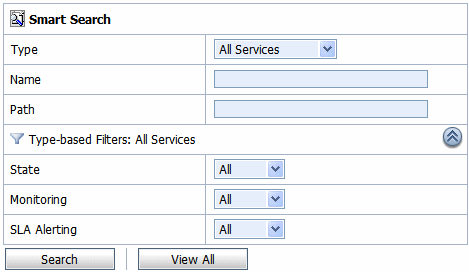
Table 4-2 describes the usage advanced filters to customize your search for both proxy services and business services.
Click Search to find all services using the set criteria or click View All to view all the services.
You can view results of the search for proxy service and business service in the Summary of All Services table (see Figure 4-4).
Use this table to enable or disable services, monitoring, and SLA alerting functionality for both business service and proxy services. You can also use this to enable or disable pipeline alerting functionality, message reporting, tracing, and pipeline logging for proxy services. To enable or disable select the check box in the appropriate field and click Update. The run-time effects of these settings also depend on corresponding settings at the global level. For more information about Global Settings, see How to Configure the Operational Settings at the Global Level. You can update the information for one or more services concurrently using this table.

The following information is displayed for all services:
Click Reset to discard any changes in the summary table and refresh the page with currently stored settings.
| Note: | You can edit the operational settings depending on the privileges of your role. For more information about roles, see Roles in ALSB. |
You can search for proxy services in the ALSB Console using filters in Smart Search. This section describes finding, viewing, and editing proxy services.
Figure 4-5 shows the different types of filters you can use for Proxy Services.
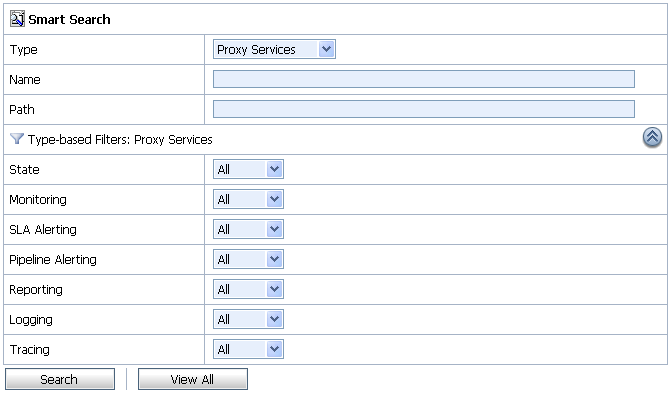
Table 4-4 describes advanced filters to customize your search for proxy services.
Click Search to find all proxy services using the set criteria or click View All to view all the services.
You can view results of the search for proxy service in the Summary of Proxy Services table (see Figure 4-6)

The Summary of Proxy Services view displays State, Monitoring, SLA Alerting, Pipeline Alerting, Reporting, Logging, Tracing, Path, Type, Name, and Actions. For more information about the fields displayed in the summary of proxy services, see Viewing and Editing Operational Settings.
Use this table to enable or disable proxy services, monitoring, and SLA alerting, pipeline alerting, message reporting, tracing, and pipeline logging. To enable or disable click the check box in the appropriate field and click Update. The run time effects of these settings also depend on corresponding settings at the global level. For more information about Global Settings, see How to Configure the Operational Settings at the Global Level. You can update the information for one or more proxy services concurrently using this table.
Click Reset to discard any changes in the summary table and refresh the page with currently stored settings.
| Note: | You can edit the pipeline message flow depending on the privileges of your role. For more information about roles, see Roles in ALSB. |
You can search for business services in the ALSB Console using filters in Smart Search. This section describes finding, viewing, and editing business services.
Figure 4-7 shows the shows the different types of filters you can use for Business Services.
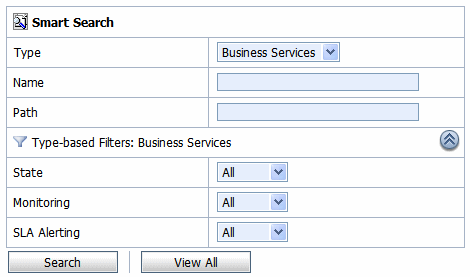
Table 4-5 describes the filters you can use to customize your search for business services.
Click Search to find all services using the set criteria or click View All to view all the services.
You can view results of the search for business service in the Summary of Business Services table (see Figure 4-8).
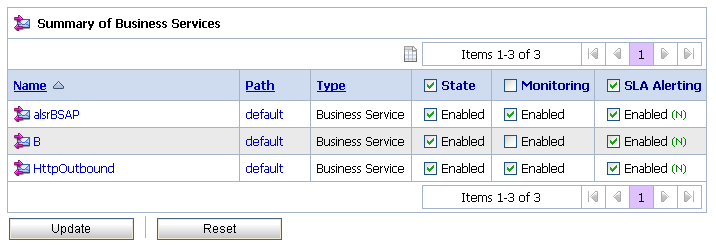
The Summary of Business Services view displays State, Monitoring, SLA Alerting, Name, Path, and Type. For more information about the fields displayed in the summary of business services, see Viewing and Editing Operational Settings.
Use this table to enable or disable services, monitoring, and SLA alerting. To enable or disable, select the check box in the appropriate field and click Update. The run time effects of these settings also depend on corresponding settings at the global level. For more information about Global Settings, see How to Configure the Operational Settings at the Global Level. You can update the information for one or more business services concurrently using this table.
Click Reset to discard any changes in the summary table and refresh the page with currently stored settings.
| Note: | You can edit the operational settings for a business service depending on the privileges of your role. For more information about roles, see Roles in ALSB. |
You can search for alert destinations in the ALSB Console using advanced filters in Smart Search. You can view and delete alert destinations using smart search.
Figure 4-9 shows the different types of filters you can use to search for Alert Destinations.
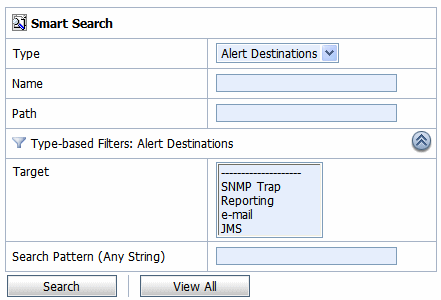
Table 4-6 describes the filters you can use to customize your search for alert destinations.
The system uses the string to search all the Description fields of the Alert Destinations, as well as the specific detailed fields of the e-mail and JMS destinations. If the string appears in any of the Alert Destination fields, the Alert Destinations matching the search criteria are displayed.
Click Search to find all alert destinations using the set criteria or click View All to view all the alert destinations. For more information about alert destinations, see What are Alert Destinations?
|
You can view results of the search for alert destinations in the Summary of Alert Destinations table (see Figure 4-10).
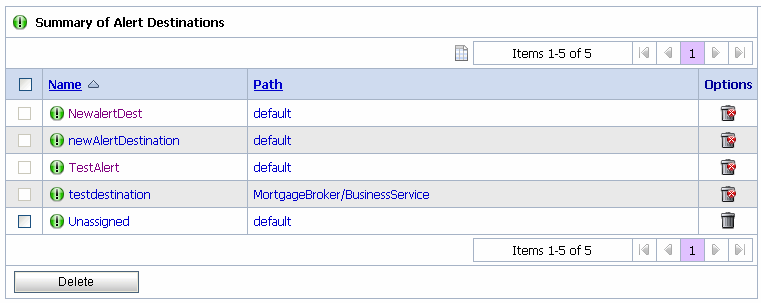
Table 4-7 describes the information is provided in the Summary of Alert Destination table.
You can delete one or more alert destination concurrently using this table.To delete an alert destination click the check box associated with the alert destination and click Delete.
| Notes: |
You can search for SLA alert rules in the ALSB Console using additional filters in Smart Search. This section describes finding, viewing, and configuring alert rules using smart search.
Figure 4-11 shows the shows the different types of filters you can use when you search for SLA alert rules.
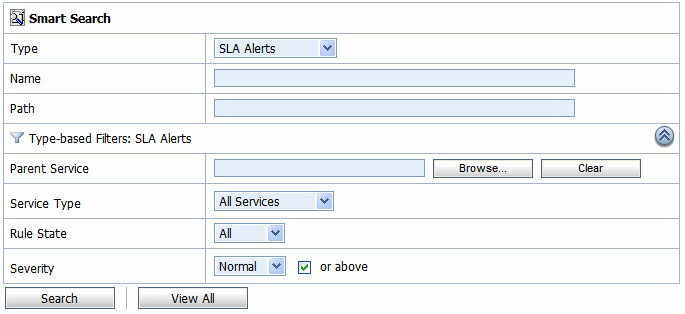
Table 4-8 describes the filters you can use to customize your search for SLA ALert Rules:
Click Search to find all services using the set criteria or click View All to view all the services.
| Note: | Select the or above check box to restrict your search to the specified severity level or above (listed from the most inclusive to the most restrictive level): Normal, Warning, Minor, Major, Critical, and Fatal. For example, to search for alert rules with severity levels equal to Major, Critical, and Fatal set severity equal to Major and click the check box associated with or above. |
You can view results of the search for SLA alert rules in the SLA Alert Rules table (see Figure 4-12). You can update the information for one or more alert rule concurrently using this table. To enable or disable the alert rule select the associated check box and click Update.
Click Reset to discard any changes in the summary table and refresh the page with currently stored settings.
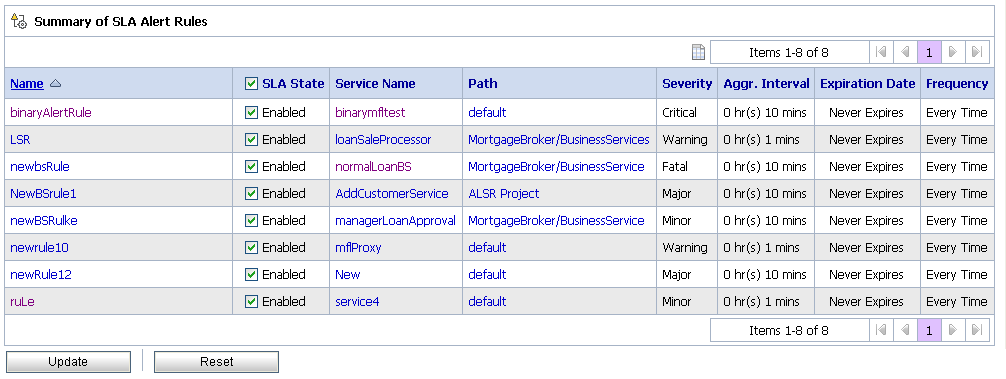
The following information is displayed in the SLA Alert Rules Summary table:
The name of the alert rule. Click the name to go to the View Alert Rule Details page. For more information, see How to Lookup or Edit Existing Alert Rules.
|
|||
|
|||
|
|||
| Note: | You can enable or disable an alert rule depending on the privileges of your role. For more information about roles, see Roles in ALSB. For more information about enabling and disabling alert rules, see How to Configure the Operational Settings for a Service. |


|